You are here
Instrumentation
Measurement benches
Microwave and sub-millimeter-wavelength measurement Benches for linear devices
XLIM institute pools of equipments and benches allow RF and microwaves test and characterization on components, circuits and materials in linear domain. These equipments can assess various ranges of frequencies according devices to be tested.
- Test Benches for [S] parameters measurement until 170GHz:
|
- RF MEMS reliability test bench :
|
- Characterization of massive dielectric materials or in thin film layers:
Tried for several years, the cavity method allows to characterize in a very wide domain of frequencies, dielectric materials at room temperature or in temperature. Thanks to a set of varied size cavities, materials characterization can be made in relevant frequencies of telecommunications sector from 2GHz until 90GHz.
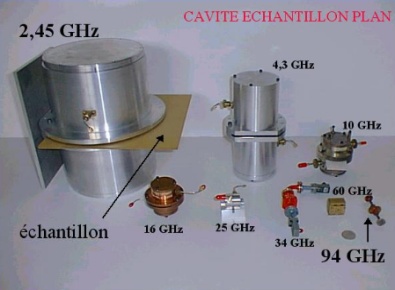
Various cavities
The sample must cover all the section of the cavity.
The gap in frequency of the mode of cavity loaded by the sample compared with that of the vacuous cavity allows to raise to the value of its real permittivity.
The comparison between quality factors in charge of the cavity with and without allows to go back up to its dielectric losses tangent.
- Characterization of dielectric resonators by the cylindrical cavities’ method:
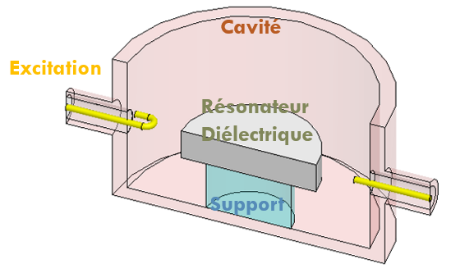
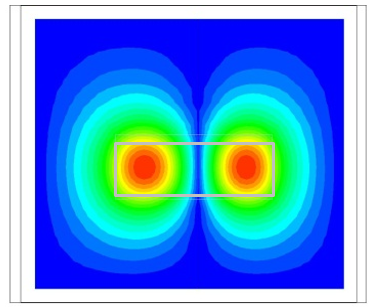
Section of the cavity Field E @ f0 (TE01δ)
This characterization technique allows to go back to the dielectric properties (ɛ,tgδ) of materials in form of dielectric resonators.
- Engraving machine by laser ablation :
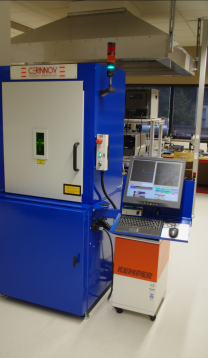
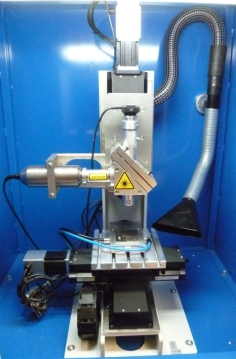
Engraving machine by laser ablation of wavelength 1064 nm and of strong power (20W max). It bases on a system piloted by computer accepting CAO files such as Gerber and IGS (2D and 3D).
This machine allows us ablation of metallic layers for the creation of transmission lines, circuits, ….The strong power of this laser allows ceramic substrats cut of and their drilling (cylindrical vias for example).
- Topographic measures for optical characterization of MEMS components:
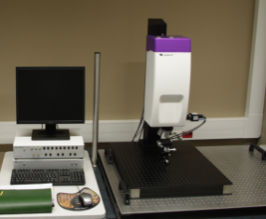
"Double- wavelength digital holography microscope in reflection mode (DHM- R2100 from Lyncéetec, Switzerland). It allows real time, 2D and 3D measurements with nanometer-scale resolution of micro-and nanometric devices (NEMS/MEMS, MOEMS etc.), phase-change materials, surface topography, morphology of biological specimens, etc. Equipped with a video stroboscopic module (7.5-ns pulses) allowing measurements in dynamic mode (from 0.1Hz to 25MHz) of switching times, specific resonant frequencies etc."
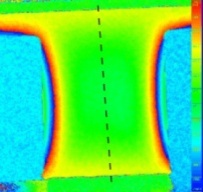 a.
a. 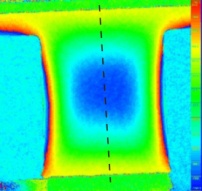 b.
b. 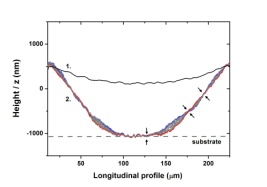 c.
c.
a. Not activated MOEMS
b. During MOEMS activation in 1450 kHz
c. The suspended membrane in Z axis in longitudinal sections are illustrated
Electromagnetism instrumentation
Antennas
- XLIM Far Field test range
- XLIM/CISTEME Compact Antenna Test Range
- Outdoor characterization bench of antennas
XLIM Far Field test range
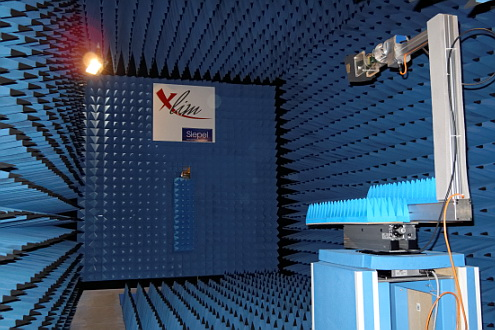
Caracteristics :
- Frequency Range : 0,5 GHz to 12 GHz
- Full anechoic and shieldied chamber
- External dimensions : 9 m x 5 m x 5 m
- Antenna size limits:
1 m to 500 MHz and 0,3 m to 12 GHz
Weight limits : 20 Kg
XLIM/CISTEME Compact Antenna Test Range
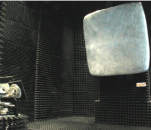
Caracteristics :
- Frequency Range : 8 GHz to 75 GHz
- Full anechoic chamber
- External dimensions : 8 m x 5 m x 5 m
- Quiet zone (test zone) : 80 cm
- Weight limits : 6 Kg
Outdoor characterization bench of antennas
Valentine antenna array on a turntable
Principle :
- Transient response measurements of the antenna under test,
- Time window of the useful pulses,
- Calculation of antenna characteristics from the useful signals Fourier Transform (radiation pattern, gain)
Elements of the test bench:
-
Pulse generators (max output voltage 220V, rise time 120ps)
-
Digital serial analyzer sampling oscilloscope 20GHz
-
Real time sampling oscilloscope 8GHz
-
UWB components: probes, attenuators, power dividers, delay lines …
-
Turntable driven by a controller using GPIB protocol
-
Broadband reference antennas (XLIM design)
Laser Optics Instrumentation (OPTOLAS)
OPTOLAS includes a wide range of lasers, bench of characterization of optical radiations or optical materials and advanced imaging systems. The platform also proposes instruments and systems adapted for laser beam or short pulse shaping.
- Amplifiers and sources for advanced laser instrumentation
- Instruments and benches of characterization of optical radiations or optical materials
- Advanced imaging systems
- Instruments or systems for laser beam or short pulse shaping
Amplifiers and sources for advanced laser instrumentation
OPTOLAS manages several oscillators and amplifiers operating in different spectral and temporal ranges:
- Femtosecond Oscillators
- Wide bandwidth and wavelength agility (Dl=10nm; Dt=100fs; @0.7µm-1µm)
- Ultra-wide bandwidth (Dl=100nm; Dt=10fs; @0.8µm)
- Compact (Dl=7nm; Dt=180fs; @1.03µm)
- Picosecond Oscillators
- Amplified, telecom central wavelength
- Tunable by OPG from the visible to the mid-infrared
- Nanosecond and sub-nanosecond oscillators @ 1064nm
- White-light continuum from visible to near infrared in sub-nanosecond operating regime
- High coherence telecom sources (Dn<1kHz)
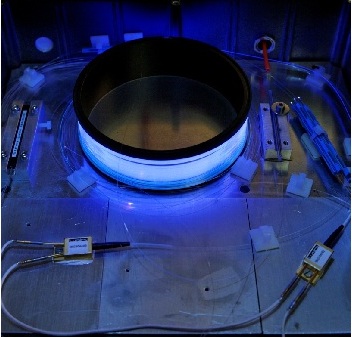
Instruments and benches of characterization of optical radiations or optical materials
Several benches of characterization have been developed for the use of the research teams of the photonics department and can be accessible through OPTOLAS. Some of them are versatile enough to be adapted to the needs of other users.
- SPIRIT – « Spectral interferometry resolved in time » a coherent femtosecond pulse measurement bench (10 fs – 100 nm)
- Measurement of nonlinear response (excitation 0.7µm-1µm; detection 0.3µm-0.9µm)
- Module of dispersion compensation up to the third order over a broadband around 800nm.
Beyond characterization benches, scientific instruments complete the specific means of characterizing the light within the platform.
- Field and intensity autocorrelators from 0.7µm to 1.9µm
- Photon counting detector
- Polarimeter
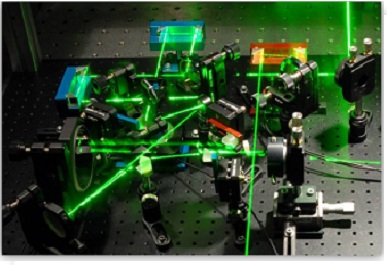
Advanced imaging systems
OPTOLAS includes microscopes which can be coupled to different laser sources. OPTOLAS offers service of high performance instruments for spatial analysis of laser beam with different kinds of cameras and wavefront analyzer.
- Multi-photon confocal microscope
- Multimodal inverted microscope (Olympus IX71) (fluorescence, phase contrast, polarization)
- Raman microscope
- Shack-Hartmann wavefront analyzer (visible – near infrared)
- High resolution, high dynamic or fast cameras
OPTOLAS has different high resolution imaging benches more specifically dedicated to astronomy. They include:
- Configurable simulator of discrete luminous objects
- Array of configurable antennas
- Direct or indirect imagery systems
- Standard detectors or hybrid detectors using sum frequency generation SFG
- data processing modules to provide observable quantity (contrast, closure phase)
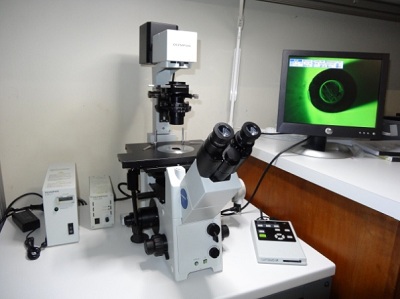
Instruments or systems for laser beam or short pulse shaping
OPTOLAS proposes devices or components suitable for spatial, spectral or temporal laser beam shaping.
- Femto Shaper – short pulse profiling (sub-picosecond from visible to near infrared)
- Spatial light modulators of high resolution
- 2D phase only component operating in reflection (1920x1080 pixels, 8µm pitch, 2p @ 1µm)
- 1D phase and amplitude component operating in transmission (640 pixels)
- Deformable mirror using 140 actuators (400µm pitch, 5,5µm stroke)
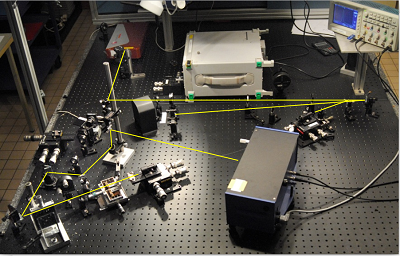

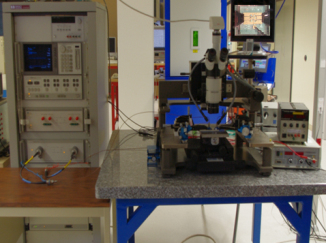
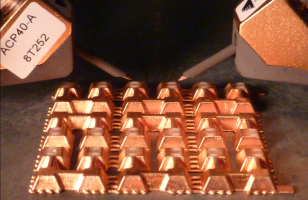
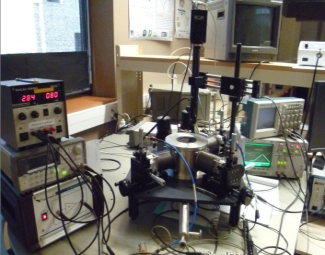
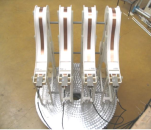



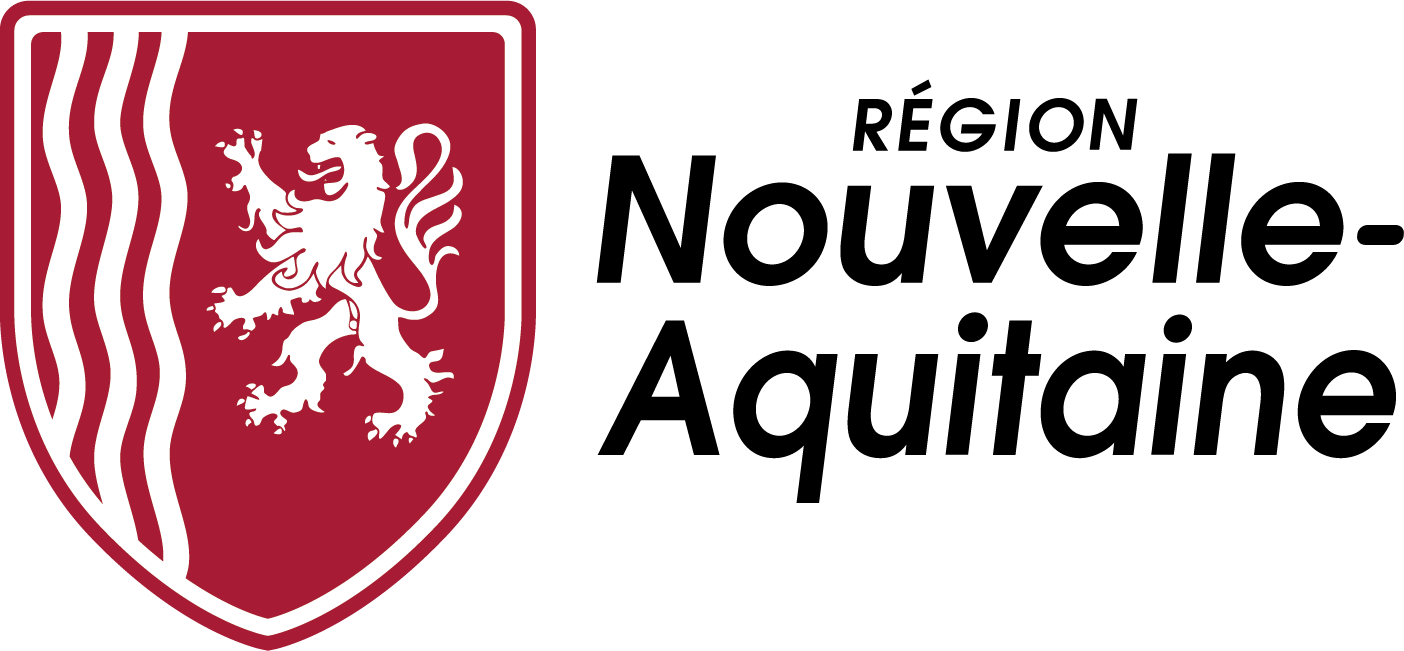
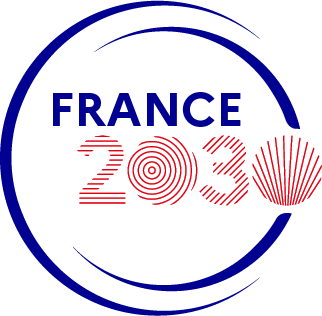

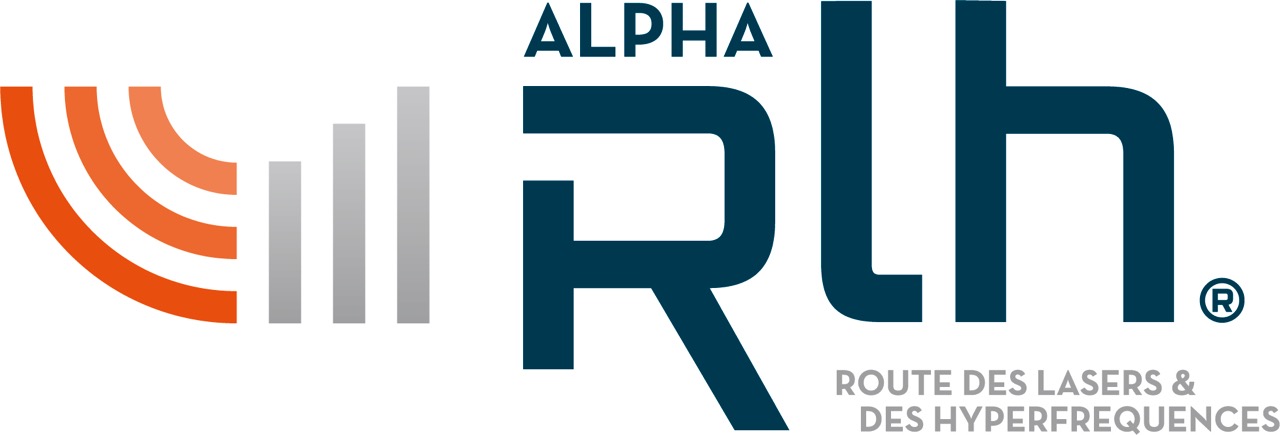

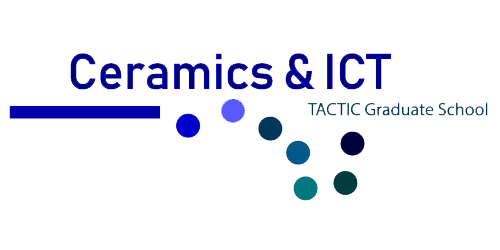
 UMR CNRS n°7252
UMR CNRS n°7252